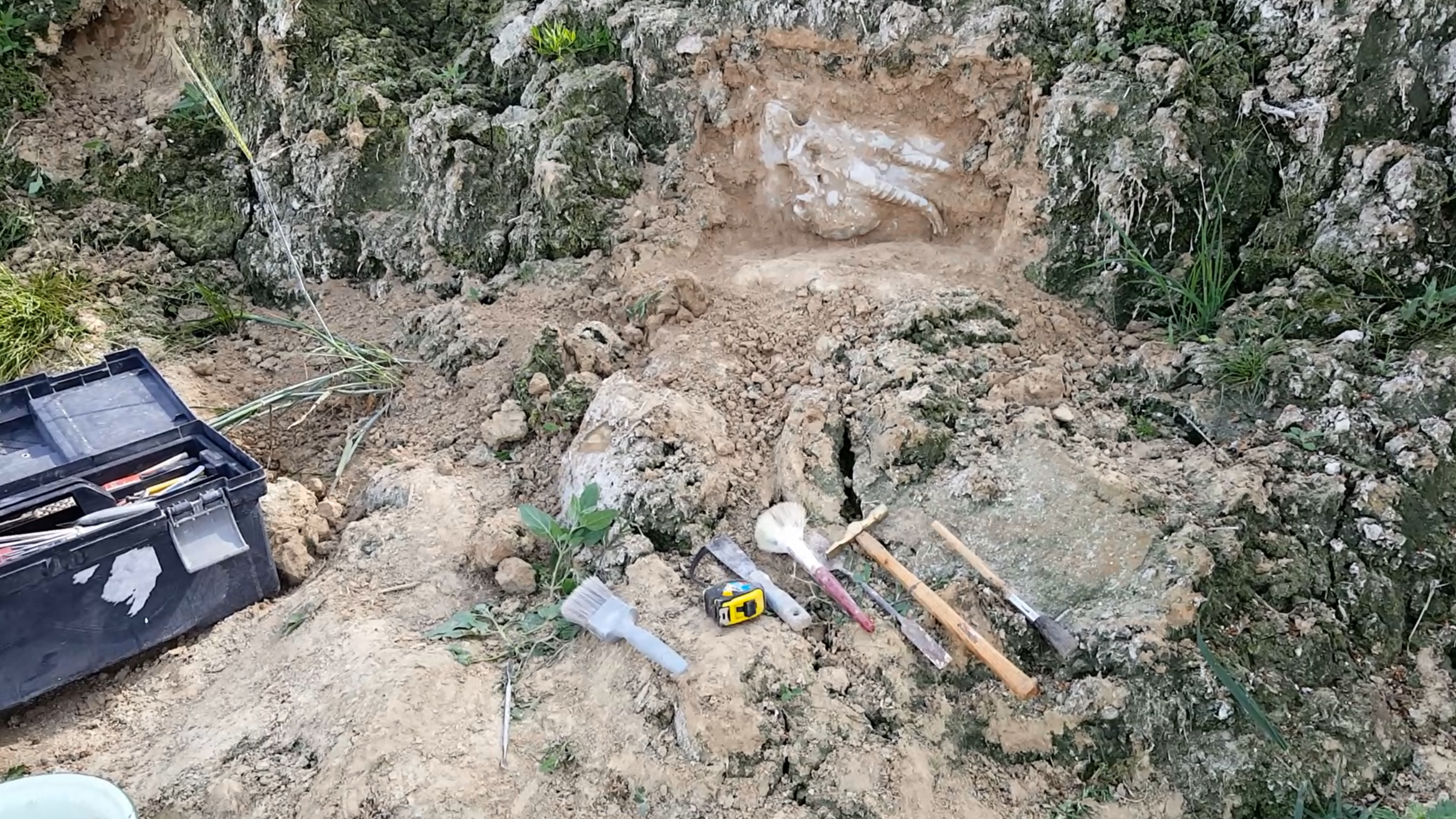ANTHROPOLOGY
My experience at the Natural History Museum and my interest in paleontology, archaeology and anthropology has let me to undertake explorative excavations of my own. In this section there are images of some of my finds.
I have had particular success with finding satyr bones. Here are some examples of a few of the results. Many are now in display cases. I list below some of the information which has accompanied the specimens. It is all, of course, highly speculative.
Satyr homocapracornigranda c. 6,000- 5,000 BC
Agia Pelagia, Kythira, Greece.
Did You Know that Satyrs are a separate species? While Neanderthals are commonly classified as a sub species of Homo sapiens, Satyrs have taken a different evolutionary path. Nevertheless, Satyrs have a 92% DNA match to modern man. Scientists are at present attempting to sequence the entire genome from bones recently discovered.
Satyr homocaprahircus
This fleshed reconstruction purports to show what a living satyr might have looked like. The artist has chosen to include eyes with oval pupils like a goat which most experts believe to be highly unlikely. The ears are pure speculation.
Did You Know that Satyr heads, or their skulls, were objects of veneration and preservation to Satyrs themselves. There have been skulls, or parts of skulls, found in Greek amphorae, often bound in cloth and covered in layers of wax. This may indicate that they were valued also by the ancient Greek civilisation which may have re-interred such finds some 14,000 years later.
An interesting specimen. The fact that, apart from two vertebrae, the rest of the skeleton is missing may indicate that the head had been removed and buried separately, perhaps by other Satyrs. It is thought that, like Neanderthals, Satyrs practiced burial behaviour. This Satyr seems to be an earlier sub-species than sp. 22753/1
Satyr Homo caprahircus
c. 700- 400 BC? Bursa, Turkey
Found in a charred amphora, this is the most complete skull of a Satyr found to date. The skull was bound in cloth and covered in layers of wax. This may indicate that Satyr heads, or their skulls, were objects of veneration and preservation to Satyrs themselves. Valued also by the ancient Greek civilisation this skull was re-interred some 4,000 years later.
Satyr horns may have had a magical value to human populations. Jewellery and implements were certainly fashioned from them. Dr. Andrea Birken has suggested that Satyrs may have been a target for hunting as a trophy- gathering or fetish related activity. This specimen seems to display damage to the second vertebra suggesting that the satyr may have been decapitated with a sword or similar implement.
Did You Know that Satyrs only became extinct as recently as 9,000 years ago and were remembered in mythic form by early human cultures, particularly the ancient Greeks? In contrast, Neanderthals died out some 33,000 years earlier. It may be that, as herbivores, Satyrs posed no competition to Homo sapiens and were able to co-exist in small numbers

























